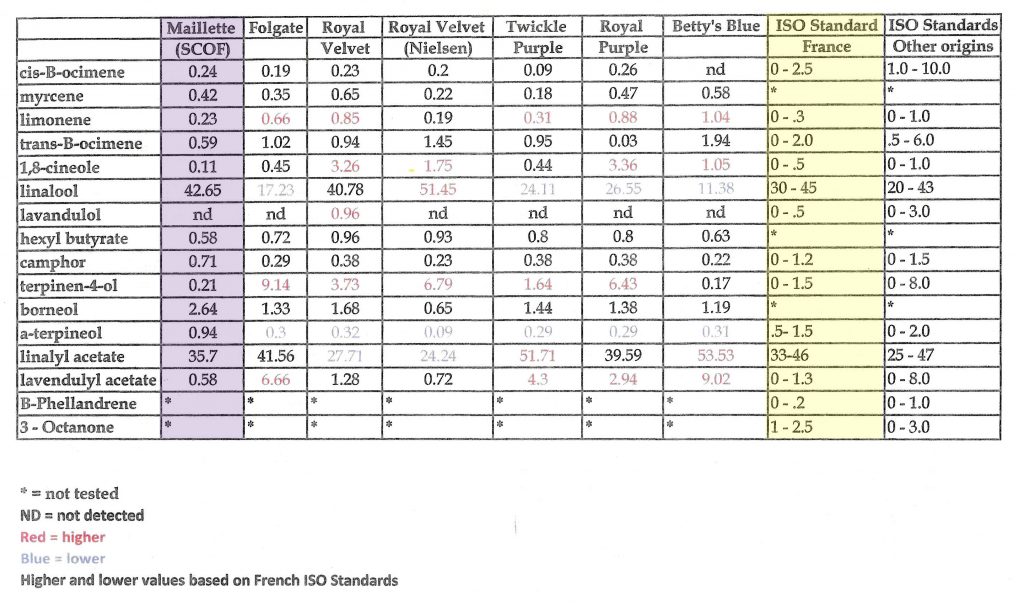For thousands of years, cultures around the globe have harnessed the power of plants. Fast forward to today, and you’ll find advanced distillation technologies that help us squeeze the properties out of plants that benefit our mind, body and soul. Potent. Medicine.
Essential oils.
Here at Sage Creations Organic Farm, we steam distill lavender and other herbs to bring out their essences. Paying careful attention to each step of the process – from growing to harvesting and throughout the distillation steps – we distill high-quality Lavandin and Angustifolia essential oils to bottle and use in our organic body products.
But what is an essential oil?
Essential oils are the super-potent version of a plant. They have the same characteristics of the plant they’re derived from, in a concentrated form.
Lavender essential oil is made up of major components including alcohols, ethers, esters, keytones, oxides and monoterpenes. Each of these components gives lavender essential oil the qualities that make it so desirable. Alcohols make it balancing, energizing and immune-stimulating, giving lavender its tonifying and antiseptic qualities. Esters provide lavender essential oil with anti-inflammatory powers, helping muscle spasms and balancing the nervous system. Keytones like Camphor give lavender its stimulating and healing effect. The list goes on.
What we perceive as fragrance are the compounds of a plant changing state and floating into our noses. But these compounds are actually serving that plant in various or specific ways.
A scientific study published in the African Journal of Microbiology Research said this:
Lavender essential oil was analysed using GC-MS. A total of 47 compounds representing 98.4 – 99.7% of the oils were identified. 1,5-Dimethyl-1-vinyl-4-hexenylbutyrate was the main constituent of essential oil (43.73%), followed by 1,3,7-Octatriene, 3,7-dimethyl- (25.10%), Eucalyptol (7.32%) and Camphor (3.79%).
Like this:
Each of these compounds helps lavender survive and evolve. Lavender’s chemical components (or VOCs) create the therapeutic and healing effects that we experience when we use essential oils.
Let’s take a step back.
Essential oils are different than oils like olive oil and peanut oil, as these are the oils squeezed out of the olive or peanut, usually without heat. Essential oils do not begin as oil, but rather as tiny chemical compounds that can change state (for example, from solid to gas) easily – the “volatile organic compounds” of a plant.
Volatile organic compounds (VOCs) are derived from a plant using a given distillation method, and voila –essential oil.
(Read more about our distillation process and how it works, right here.)
So what distinguishes a high-quality essential oil from a mediocre one?
High-quality essential oils are 100% pure, giving you the full benefits of a plant’s compounds. Have you ever gotten a headache from using an essential oil? It may be because it wasn’t a pure essential oil, but instead was watered down with synthetic additives.
The adulteration of essential oils is a big reason for all the misconceptions around essential oils. When producers adulterate their plants to increase yields and profits, the quality of the essential oil goes way down.
Some produces, not caring about quality, will spray linalyl acetate (a compound that exists naturally in lavender) on lavender plants just before harvest in order to boost the quantity of oil. Another adulteration method widely used is a type of “cutting”: mixing synthetic components together and adding small quantities of natural oils.
Quality is scientific.
What we experience when we use essential oils is the biological make-up of the plants the come from! There is no fudging the science behind it. We can understand the quality of a lavender essential oil – or any essential oil – by breaking down its actual components.
Take a look at our break-down:
In 2013, we had our Lavender angustifolia essential oil tested to see its quality in scientific terms. The purple column reflects the components of our essential oil. The yellow column shows the range in which our numbers should be, according to French ISO Standards.

As you can see, all of our numbers are all within the desired range. We are excited to be sending another batch of our essential oils off to France for testing again this year.
One final note.
Since different species of lavender are made up of different VOCs, we can experience each species differently.
That’s why at Sage Creations Organic Farm, we distill both Lavandin and Lavandula Angustifolia varieties separately – and with great care, of course.
Lavandin essential oil acts as a mild stimulant, with a pungent smell and invigorating effect. Angustifolia (or English lavender) essential oil is calming and relaxing with a sweet smell.
Visit us at the farm to experience for yourself the magic of science, the wonder of nature, and the art of essential oil distillation.


Visa Express
This informative article has captured my attention. So many things have been mentioned here that I had never considered before. You’ve shown me that there’s more than one way to look at these issues. I’m not even sure how I got here, but I thought this publication was fantastic. I appreciate the time and effort you put into it. It is clear. Thank you once again.